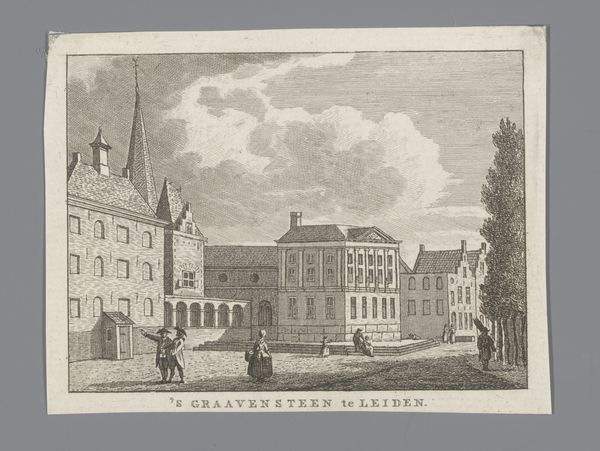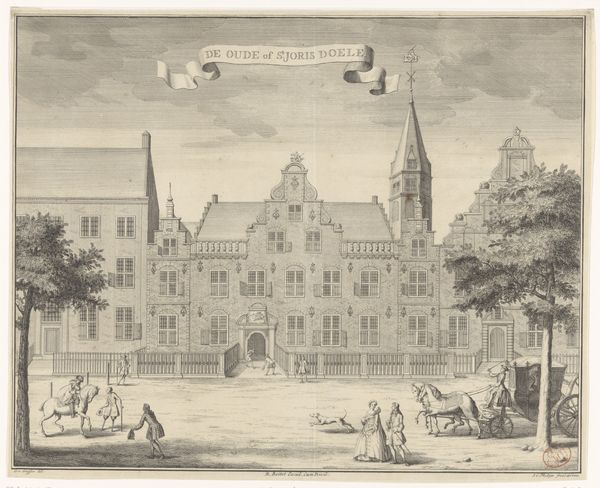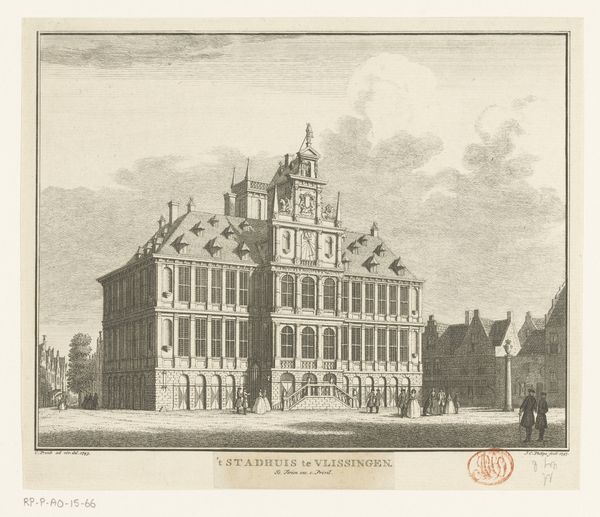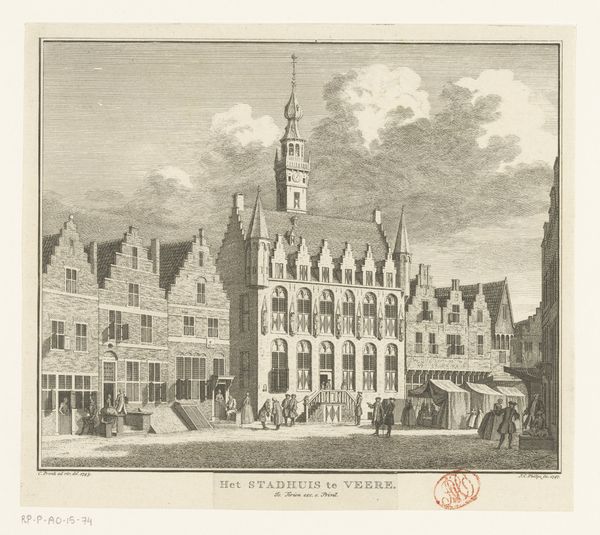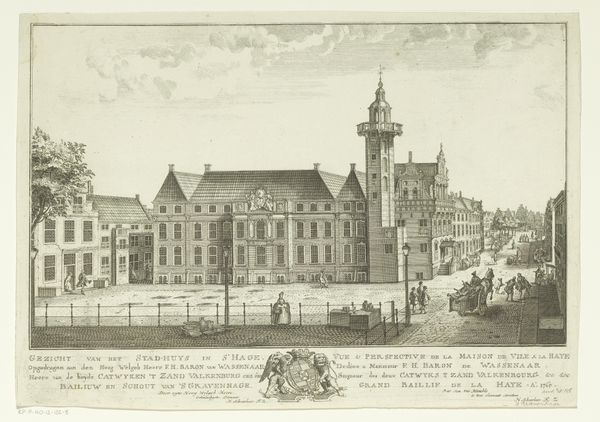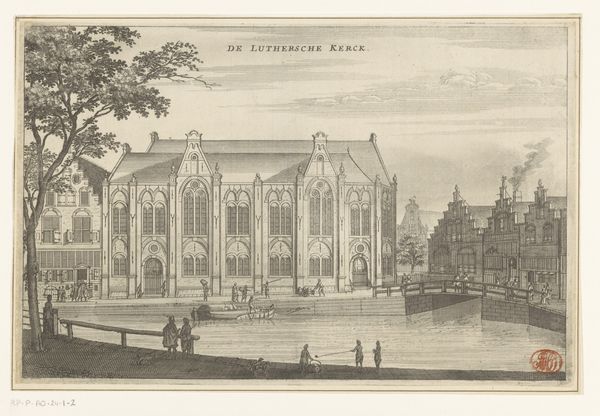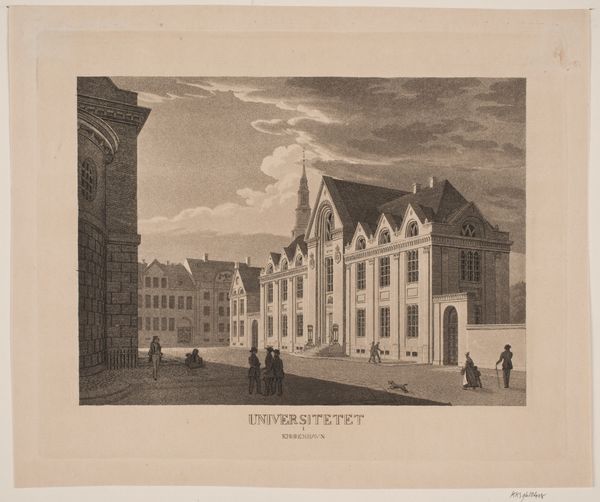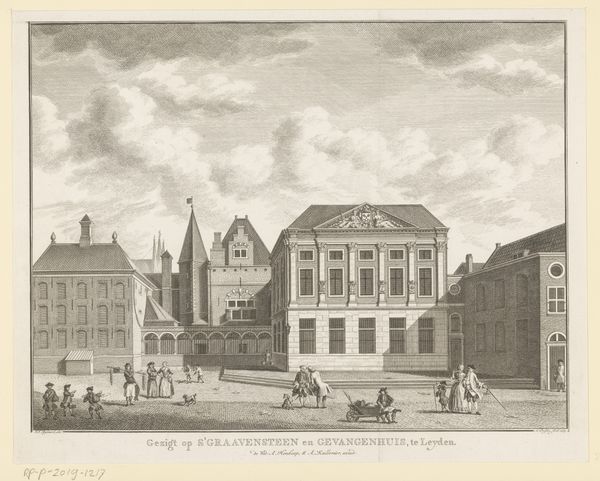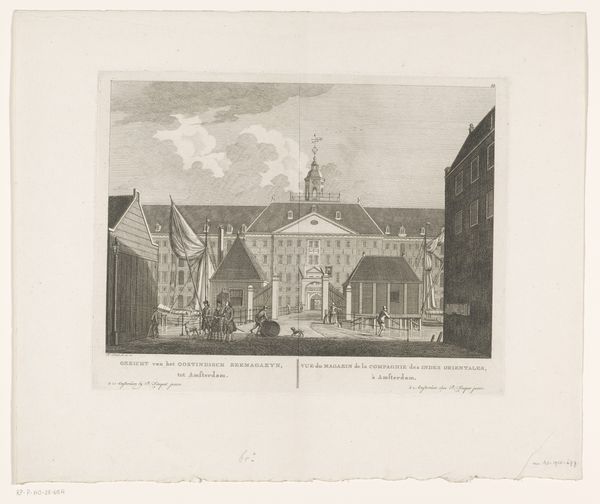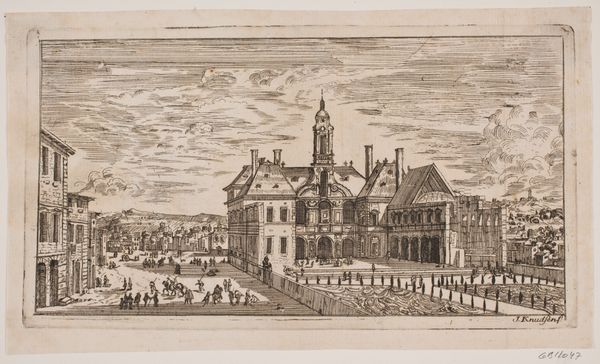
print, paper, engraving, architecture
#
dutch-golden-age
# print
#
paper
#
cityscape
#
engraving
#
architecture
#
realism
Dimensions: height 82 mm, width 108 mm
Copyright: Rijks Museum: Open Domain
Curator: This is Jan Caspar Philips' "Gezicht op het stadhuis van Dordrecht," or "View of the Town Hall of Dordrecht," created in 1742. It's an engraving on paper currently held at the Rijksmuseum. Editor: The intricate detail achieved through the engraving is captivating! I’m struck by how it captures the weight and grandeur of the architecture itself and makes me consider its societal relevance. Curator: Indeed. Philips, working within the Dutch Golden Age tradition, highlights not only the architectural features, but also the surrounding social activities. Note the figures populating the foreground, engaging in daily life before this civic structure. Editor: I am quite curious about the labor that went into its creation. Considering the time, what kind of tools and processes did Philips use to make the fine lines and tones to replicate architecture? Curator: As a print, this image has an inherent political element, serving as a publicly available record. It’s fascinating to consider how widely it may have been circulated at the time. This type of image helped construct a visual idea of the Dutch Republic. Editor: Absolutely, prints like these acted as forms of social currency. And what’s truly significant is that Philips’ deliberate choice of medium allowed his artwork to extend beyond the exclusive elite. Curator: And his approach reflects broader trends. There's a movement towards Realism as this time that helped to highlight elements of daily life rather than idealised notions of reality. Editor: Viewing this, I start to wonder how contemporary depictions of important spaces like city halls are managed. Do printed images still play a vital part in sculpting shared perceptions and instilling civic pride? Curator: That’s a key question. I am seeing how images, disseminated in print, formed opinions and strengthened shared identity, solidifying Dordrecht’s image as a crucial Dutch urban hub in the 18th century. Editor: It certainly prompts us to ponder the complex relationships among craft, culture, and the construction of shared beliefs and communal spaces. Curator: Exactly. Thanks to this perspective, this historical artwork has broadened our sense of production practices as well as the public imagery of civic virtue.
Comments
No comments
Be the first to comment and join the conversation on the ultimate creative platform.
